On Monday, a Multnomah County jury awarded $1.05 million to a Tigard resident who was hit by a bus operator while riding his bicycle on Highway 99.
It’s a victory, but a reminder that bicycle riders and their advocates still face an uphill battle when it comes to establishing a legal right to the road.
The collision happened on October 7th just before 9:00 am. 62-year-old Tigard resident Michael Kruss was riding his bike southbound in the bike lane of Highway 99. As he passed SW Versailles Road and saw a bridge over the Tualatin River (Google Map) coming up, Kruss had a choice to make — because the bike lane on this State of Oregon-owned facility abruptly ended about 100 feet in front of him.

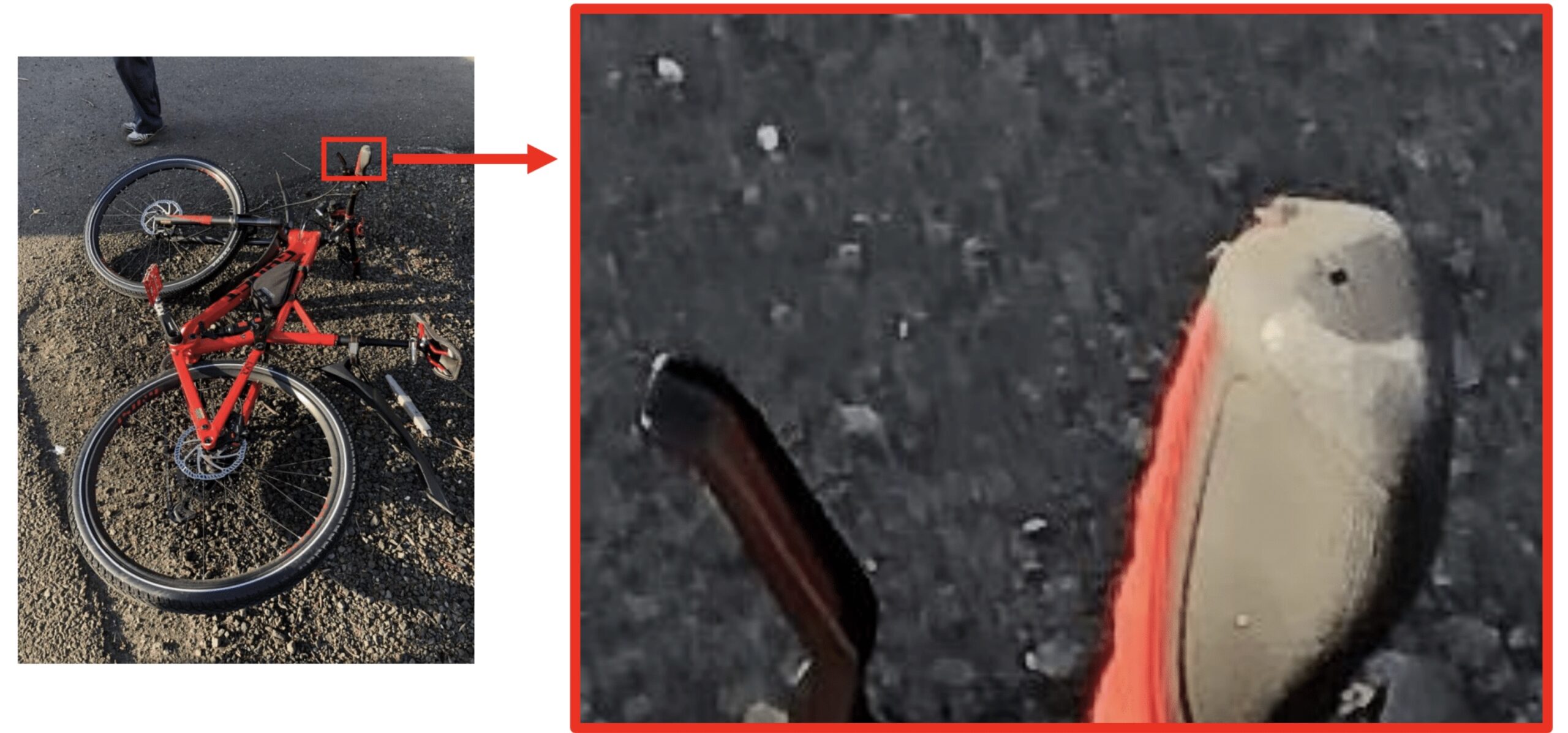
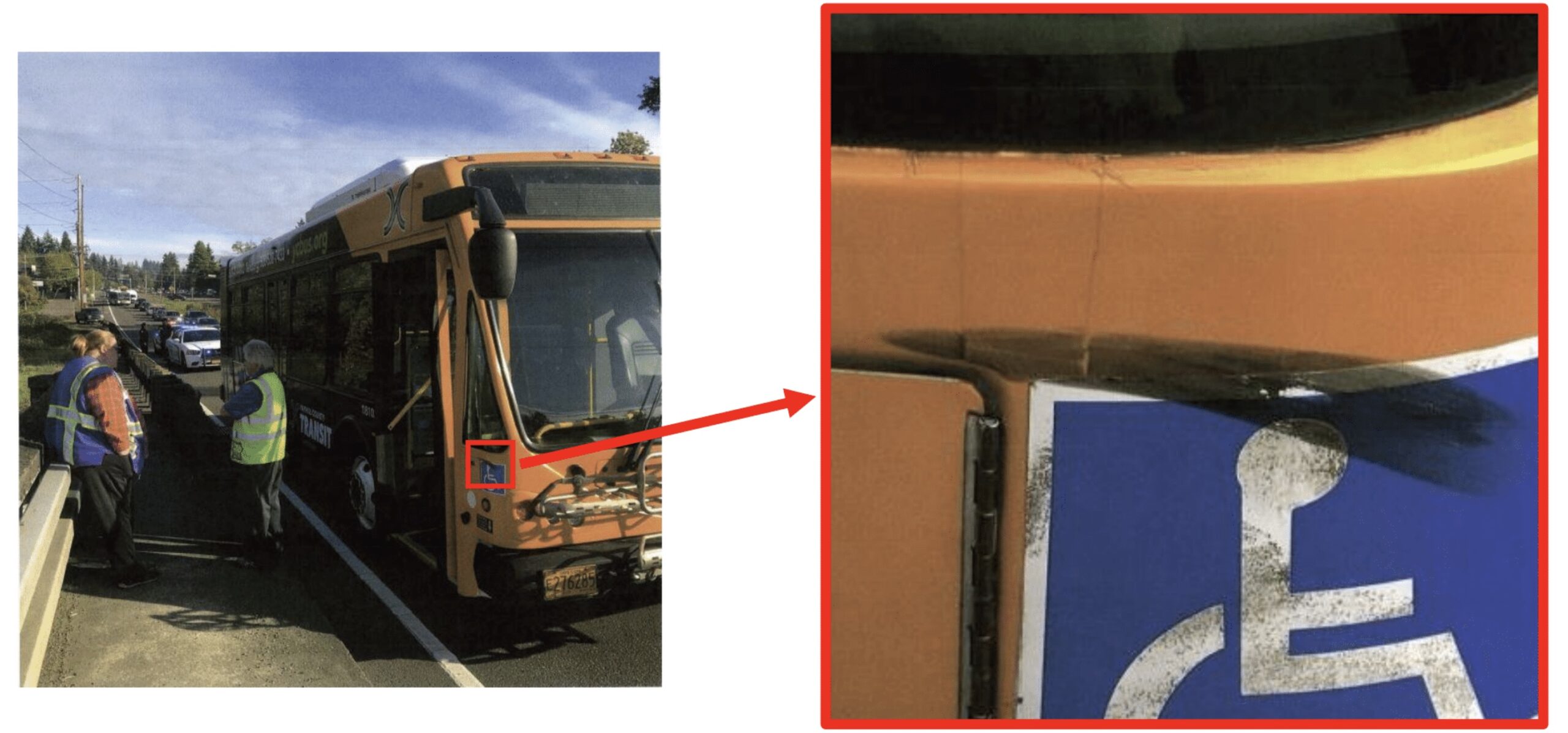
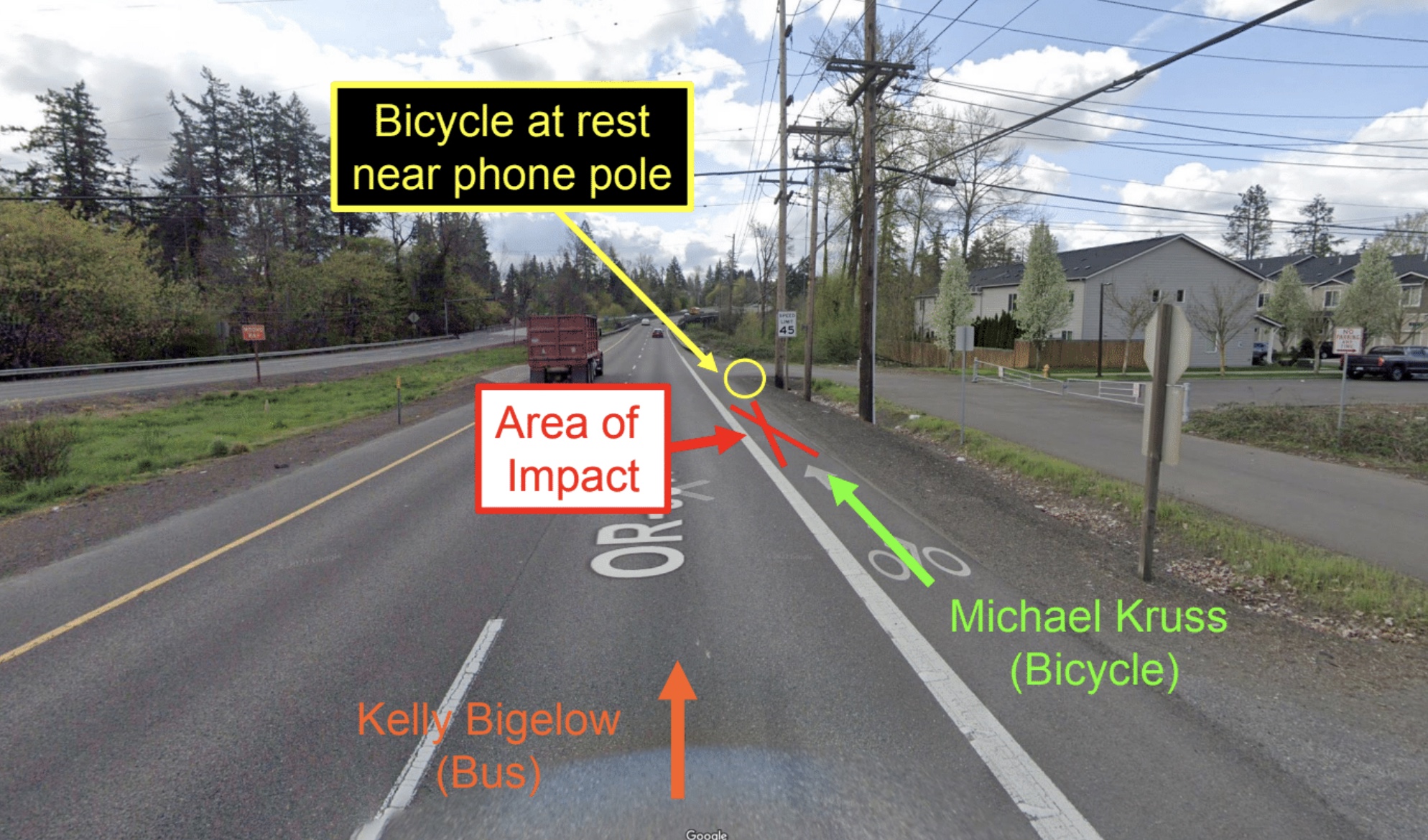
We all know the feeling: Do you stay in the main roadway and risk being closer to other traffic? Or do you take a gamble on a sidewalk behind the guardrail that is full of debris, vegetation, and who knows what else? In this case, Kruss, a former All-American swimmer, chose to stay in the lane.
While Kruss continued south, the driver of a Yamhill County Transit bus, Kelly Bigelow, drove up behind him. According to a driver statement showed during the six-day trial, Bigelow saw Kruss in the bike lane. But the driver claimed that Kruss was “wobbling” in the bike lane and was riding “on or near” the white stripe of paint that separates the lanes.
“The driver stated he slowed because of the rider’s behaviors,” reads the driver statement recorded by First Transit, the private company that runs Yamhill’s transit system. “[Bigelow] looked up to check traffic in front of him and his distance from the bridge. While his attention was diverted from the bike rider, he heard a thud on the side of the bus.”
That “thud” was Kruss being hit and then slammed to the ground. The impact resulted in major injuries including a broken clavicle and scapula that required immediate surgery. Kruss also suffered a sternal fracture, nine broken ribs, and several serious contusions. He spent 17 days in the hospital, had three surgeries, and racked up over $318,000 in medical bills.
Adding insult to injury was the fact that lawyers for First Transit denied that it even happened and blamed Kruss for the collision. If not for Kruss’s legal team, led by Scott Kocher of Forum Law Group (a BikePortland financial supporter and contributor), we might never know the truth.
Forum Law Group filed suit against Bigelow and First Transit. Their complaint claimed that the driver’s actions led to Kruss’s injuries and that First Transit failed to adequately train and supervise their employee.
First Transit denied the allegations. The injuries and damages to Kruss, “Were caused by his own negligence,” stated a filing by First Transit’s lawyers, Bullivant Houser Bailey. They claimed it was Kruss who lost balance on his own, failed to see the bus (which was behind him), didn’t stay in the bike lane, and so on.
First Transit hired an expert witness, a retired leader of the Portland Police Bureau traffic crash reconstruction team, to back up their claims that Kruss wasn’t struck by Bigelow’s bus.
A key piece of evidence in the case was a black smear mark on the bus. Even though the mark was consistent with the height and composition of the rubber on Kruss’s handlebar grip, First Transit’s expert witness tried to deny it. It was only from Kocher’s cross-examination of the retired PPB officer that the truth came out.
Kocher and his team were also able to demonstrate to the jury that First Transit’s training requires bus operators give four feet of space to bicycle riders when they pass. Throughout the trial, First Transit acknowledged zero responsibility for what happened.
The design of the roadway was also a factor (the official Tigard Bike Map lists this section of the highway as a “difficult connection”) in the collision. Not only is this a 45 mph speed limit state highway with an unprotected bike lane, but as you can see in the images, the bike lane striping narrows from the standard eight-inch width to just four inches prior to the bridge (the legal width of a shoulder). This is a frustratingly common ODOT treatment that disrespects the rights and safety of bicycle riders and forces them into a precarious position. ODOT also failed to maintain a potential alternate route on the other side of the guardrail.
Even with the clear negligence of ODOT’s infrastructure, Kocher didn’t make them part of this case given the presence of strong “discretionary immunity” laws and other complications. Kocher felt his case was strong enough to win without getting mired in the mud with the State of Oregon.
Kocher felt it was entirely reasonable for Kruss to establish his presence on the white line prior to the bridge because he had made up his mind to share the lane. It was safer for Kruss to begin to move to the left of the shoulder well before the bridge so that he wouldn’t make a last second swerve where the road narrows at the guardrail.
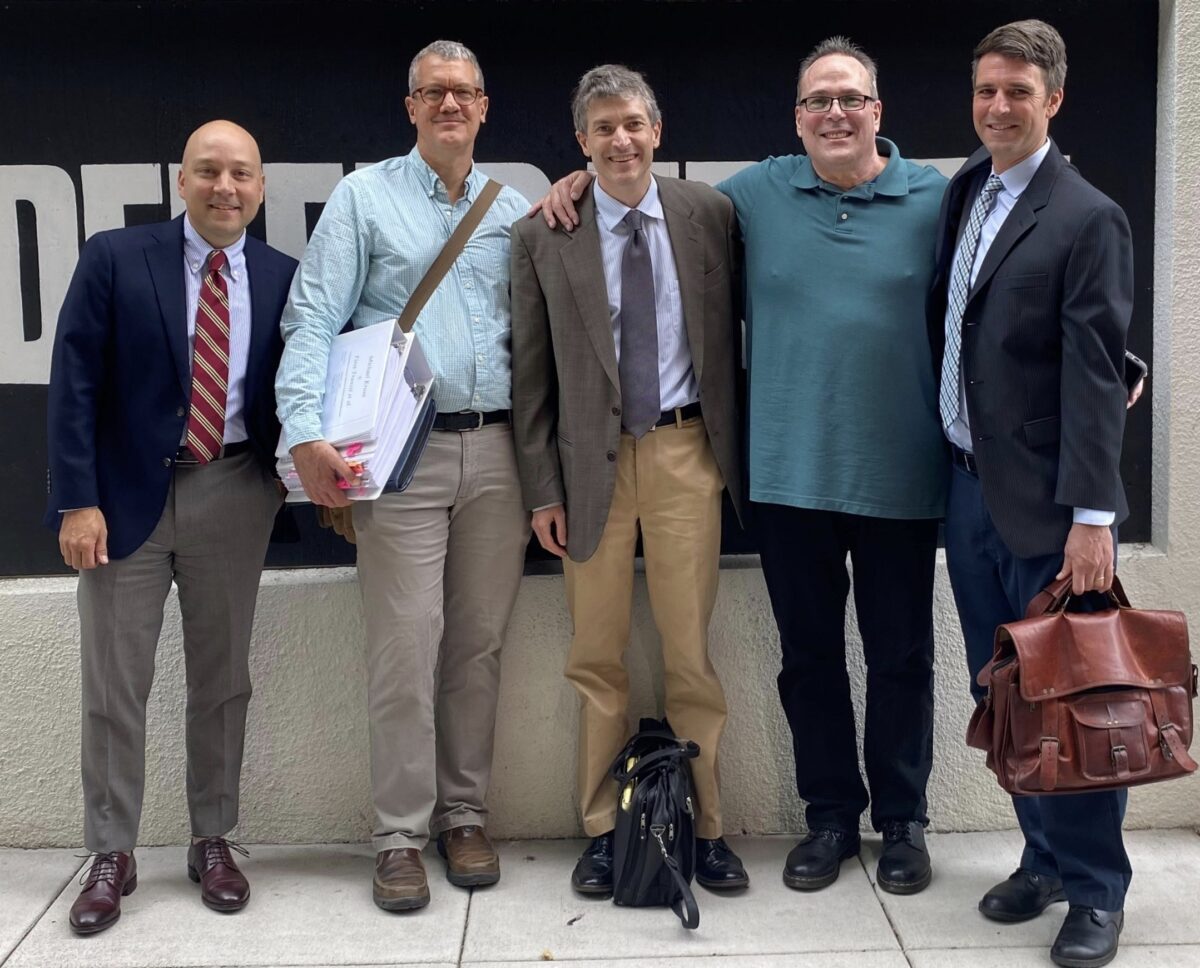
Given the width of the roadway and the requirement of a four-foot passing distance, the safe move for the bus operator would have been to slow and wait behind Kruss until the road widened again after the bridge. But the bus operator (who died from Covid before he could be deposed or participate in the trial), chose to make the unsafe pass.
After hearing the facts of the case and listening to arguments from both sides, the jury sided with Kruss. But while they awarded him $1.295 million for economic damages and $318,000 for medical costs, they also said Kruss shared 35% of the fault. That dropped his award to $1.05 million.
Kruss had a rear taillight and was riding in a legal position on a road in dry, daylight conditions. The fact that he was found to share any fault in this collision is very unfortunate.
“This case proves two things,” Kocher told me. “First, the justice system is not broken. This is a success. Is the system perfect? No, but for everyone that says there’s no justice, that’s not true.”
“And second,” he continued. “Even in 2022 we still have a long way to go to fight for our right to the road.”




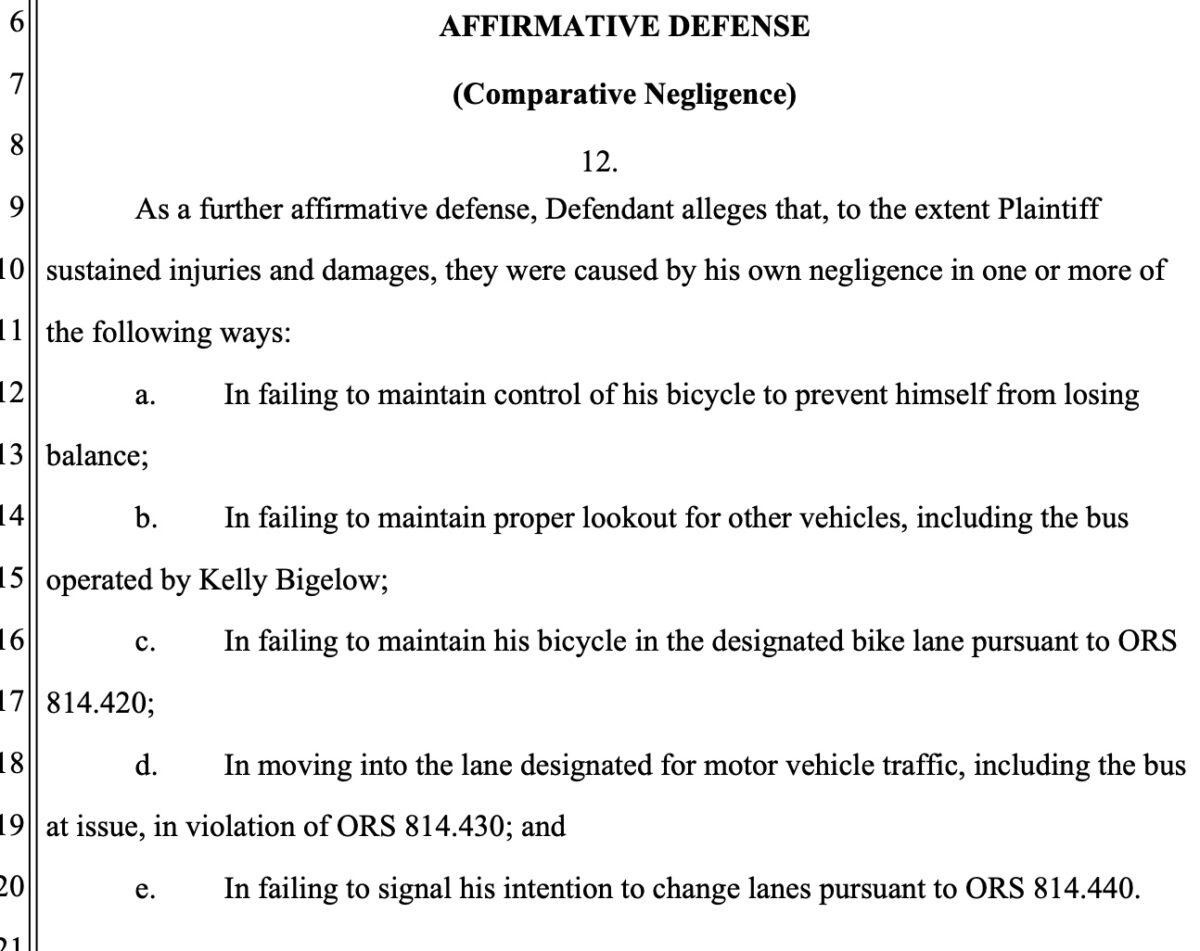
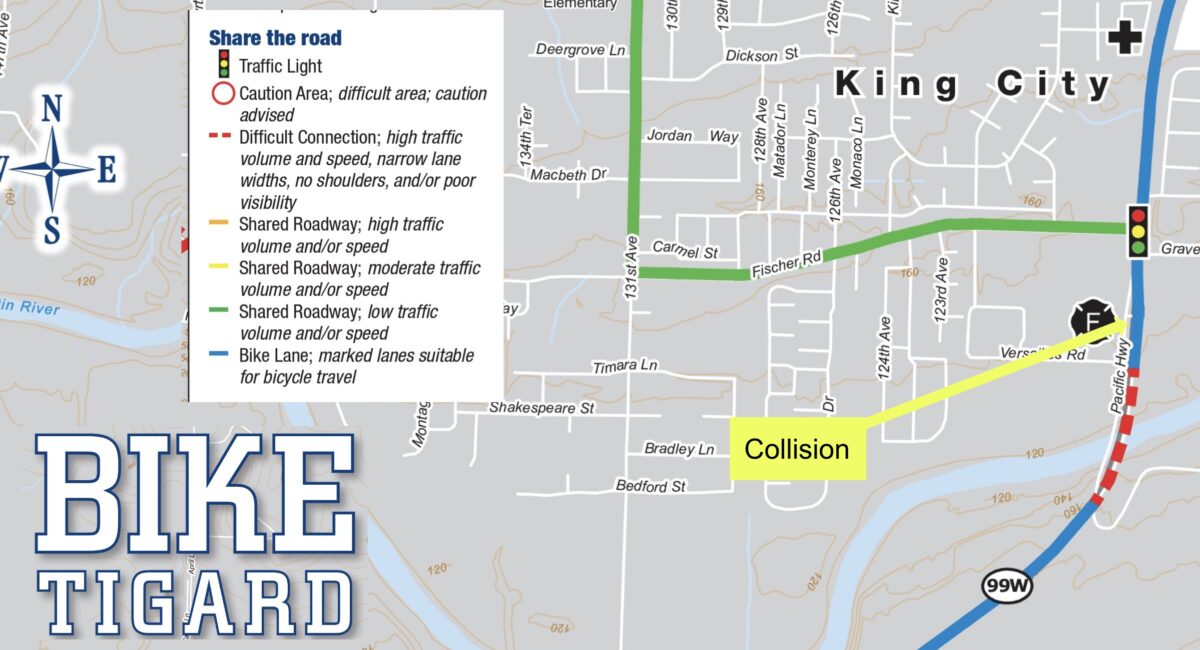
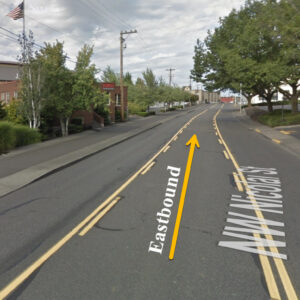
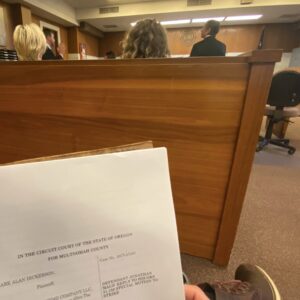

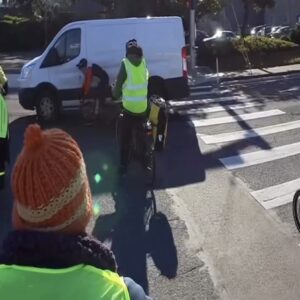
Thanks for reading.
BikePortland has served this community with independent community journalism since 2005. We rely on subscriptions from readers like you to survive. Your financial support is vital in keeping this valuable resource alive and well.
Please subscribe today to strengthen and expand our work.
35 percent at fault? I call BS.
This is why cyclists need to be mindful about how our behaviors and interactions with motorists can affect us. You can bet that some of the jurors see bad behavior by cyclists and decide all cyclists are at least partially at fault for every crash.
As for the retired PPB investigator, it’s pretty clear that the anti-cyclist attitude is alive and well and has always been present.
I’ve been meaning to get a camera. Maybe now’s the time.
I wish the 35% reasoning was explained.
seems obvious to me that the jury was made up of typical Americans who have likely never ridden a bicycle in traffic like Kruss was doing and/or have very little understanding or sympathy for his point of view. This type of thing happens all the time. They also were likely very influenced by a retired PPB “expert” who spouted a bunch of untrue facts in an attempt to help his client and was only called to question after expert questioning from Kocher and his team. They might have also felt like it was irresponsible for Kruss to even be in that position given that there was space to his right and they might have felt like he should have pulled over and walked if he felt unsafe using the sidewalk behind the guard rail. Again, the vast majority of Americans don’t think Kruss should even have been on that road in the first place, and therein lies the problem!
The only expert in that courtroom was Kocher
I would have loved to see that cross-examination.
Would have made a great episode of Perry Mason! (yeah, I’m dating myself…) Great job, Scott and team!
I understand that the lawyer was right to recommend against involving ODOT in the lawsuit, since it would not have improved the chance of getting a win for the individual. But it would have been better for the rest of us if ODOT was held liable for obvious safety risks like this.
Consider that Portland is only now installing curb cuts for wheelchair users because of legal victories by disabled people who were willing to go to court with cities.
In this case ODOT has built a really dangerous facility for bikes. We are required to use the bike lane before the bridge, but then before the bridge the guardrail makes it very difficult to get up on the sidewalk, and the shoulder behind the guardrail is full of debris, so you have to merge into the main traffic lanes. ODOT could improve this now by providing a safer bike facility that leads onto the 5 foot wide bridge sidewalk.
In the long term there needs to be a wider shared facility for bikes and pedestrians or separate bike lanes and sidewalks, after remodeling the bridge.
Actually, it’s possible that the roadway (minus sidewalks) here is 25 to 26 feet wide, which would provide room for 11 foot lanes and a 5 foot wide bike lane, or at least 10.5 foot lanes and a 4.5 foot bike lanes, just by re-striping the southbound bridge.
Unfortunately the northbound bridge appears to be newer and narrower, with no pedestrian or bike provisions. It appears to be 24 feet wide which might not be enough for a true bike lane, though perhaps there could be a 3 foot shoulder with narrower 10.5 foot lanes.
comment of the week
Look at the red truck in the above picture. They have about 2ft to spare in that lane. Each lane could be narrowed by 1.5 to 2ft, providing about 4ft for a bike lane here. Not perfect, but it’s something.
I would like to add that this bridge is less than a mile from my house so I ride it often, and the Northbound bridge has a 2? feet wide sidewalk squeezed behind the barrier that’s so small you have to ride extremely slowly to provide hitting the walls on either side, and if I see a pedestrian I have to back out and wait. Certainly no space for a bike trailer or recumbent either. And the road on the northbound side is a blind long curve.
Well, that’s a tell. We know how those windshield-blindness reports usually go.
Can Yamhill County Transit sue ODOT, claiming the reason they got stuck with a $1M bill is that the infrastructure was poor and confusing, so ODOT should pay it?
The typical thoughts (mine anyway) in these cases are that the injured person should sue the driver and the party responsible for the poor infrastructure, with the idea that if ODOT, PBOT or whomever starts getting sued and losing often enough, they’ll finally act to make improvements, because it gets too expensive for them not to.
But what about from the other direction–what if people who lost (or are exposed to losing) cases like this, or been assessed expensive tickets, started suing or at least blaming those responsible for the infrastructure, claiming they hit the victim because the road was confusing or dangerous?
I realize people who speed will argue the sign was hard to read, etc. but I doubt many really pursue action against PBOT or ODOT for that. But when someone gets a large judgement against them, it seems logical they (or their insurance company) might try to go after the infrastructure’s party. The result would be pressure to fix it, just as when a victim goes after an agency for its faulty infrastructure.
Of course the avalanche of drivers going after transportation agencies demanding infrastructure improvements to protect them from getting hit with judgements for running over people walking and biking is probably not going to happen. The more likely thing is drivers demanding that people walking and biking be kept away from the roads. But it’s a thought.
That spot reminds me of those two idiotic bridges on Barbur just south of the Capitol Hwy merge.. 45-50 mph traffic and a disappearing bike lane. Every day I cringe when I get to those things. Another place that ODOT can easily fix, but won’t.
st john’s bridge! Fix it now!
If we still had the old BTA, we would have fixed it then.
Right? Same. There’s absolutely no reason for there to be 4 auto lanes here. I’ve been riding this section of Barbur for over 20 years and have never seen enough auto traffic to warrant it. Even during rush hour.
I agree, and so do many others here. But ODOT *must* have their four continuous lanes on Rt 99W, as they call it.
Speaking as a driver and a cyclist: When I’m driving and encounter a cyclist who is “wobbling”, I give them EXTRA room as I maneuver around them. This bus driver was a menace to society since they admitted seeing a cyclist “wobbling” and then looking elsewhere at the moment they attempted to pass the cyclist with zero clearance. I bet Kocher would have had a field day if the driver had had to testify at trial.
The “wobbling” of a cyclist, especially an experienced cyclist being careful on the shoulder of a high speed road, is probably less than one foot from a straight line. On the other hand, the typical motorist pretty much uses all eleven feet of the travel lane with his 7-foot wide (+/-) automobile or SUV. The motorist’s weaving is more than the bicyclist’s wobbling. The driver simply made up the “wobbling” description because that’s more believable than “he came out of nowhere.”
ACAB includes retired cops hired to defend dangerous bus drivers, apparently
I disagree that ACAB but I agree that cops should not have any credibility in cycling mishaps.
I find this comment bigoted and offensive.
> Even with the clear negligence of ODOT’s infrastructure, Kocher didn’t make them part of this case given the presence of strong “discretionary immunity” laws and other complications. Kocher felt his case was strong enough to win without getting mired in the mud with the State of Oregon.
and
> “This case proves two things,” Kocher told me. “First, the justice system is not broken. This is a success. Is the system perfect? No, but for everyone that says there’s no justice, that’s not true.”
seem at odds
>the bike lane striping narrows from the standard eight-inch width to just four inches prior to the bridge (the legal width of a shoulder)
An 8 inch wide bike lane would be narrow indeed, even before it narrowed to 4 inches. I think you meant 8 foot and 4 foot.
Hi cat, I thought he was talking about the width of the painted line. See how it narrows right before the bridge?